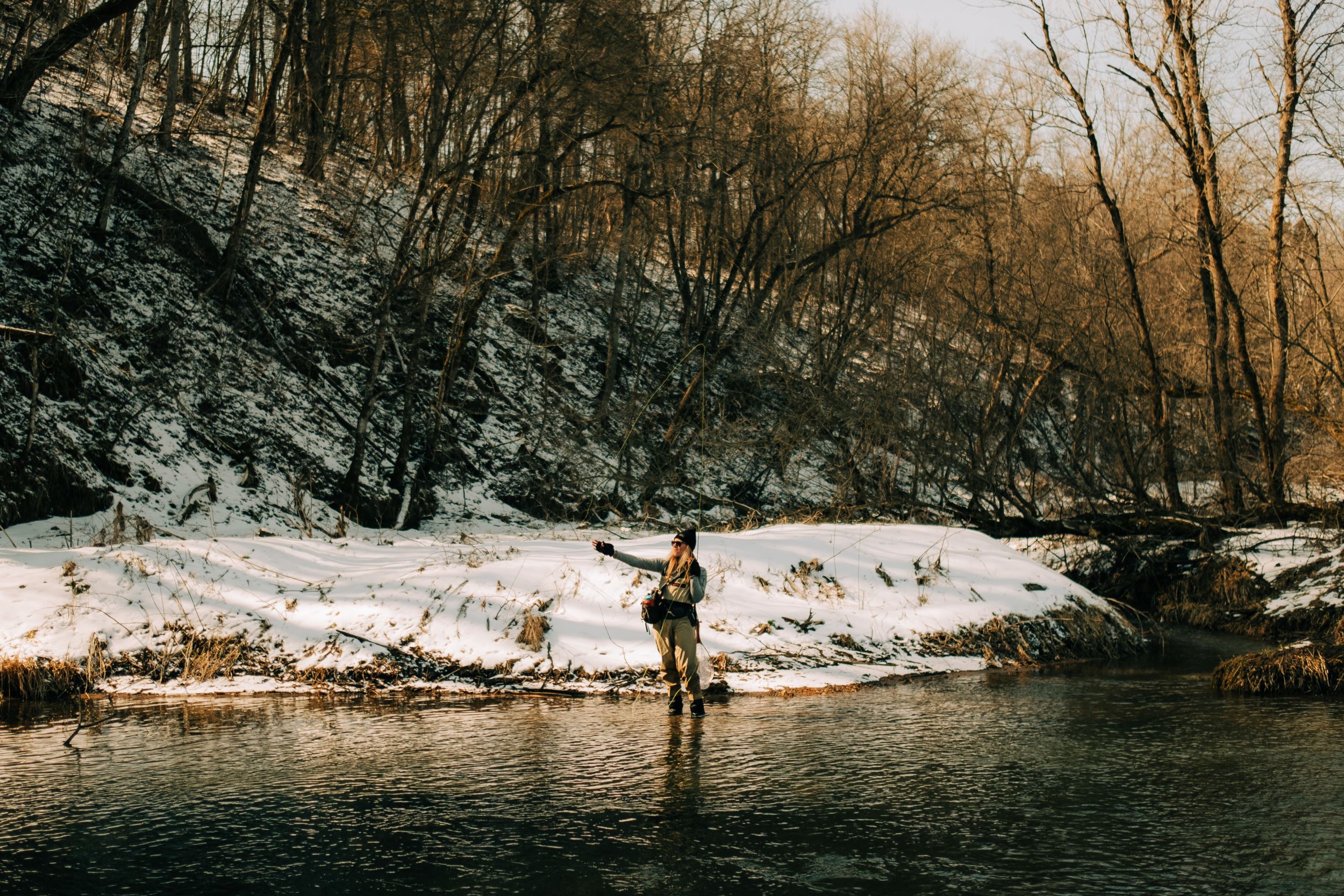Keep on Casting
By Greta Solbrig on January 3, 2024 in Blog

Photo by Zachary Gilbert
Though fall’s mild weather is behind us, you don’t necessarily need to cast aside your fishing gear. Winter fishing has its perks. Picture a serene winter day, the quiet crunching of boots on ice and a vast sea of white with an unseen world moving just below the surface.
Winter wins
No need to rush for a spot on the dock or jetty; fishing in winter typically means more access and fewer crowds. While ice fishing is a popular winter fishing method, fly fishing is still a viable option if you can find open water. Large or moving waterbodies will stay ice-free the longest.
Location, location, location
Fish tend to cluster more tightly in the cold, gathering in deeper pools where the water is warmest, the most oxygenated and likely to have cover. Search for sunny areas or places where vegetation is still present. Locate the right spot and your lure could pack a punch!
What’s on the menu
A fish’s metabolism decreases in colder months, making them less likely to travel far for food as they must carefully conserve their calories. Since they’re more sluggish and less hungry, use slow motions for a meal that seems worth chasing. In terms of bait selection, there are a lot of things to consider—from your target fish species to the clarity of the water. Your best bet is to mimic what is naturally available in that waterbody. Don’t be afraid to experiment!
Timing is key
There are different schools of thought, here. Some recommend fishing midday when the sun has had some time to warm things up. Others maintain that, just like in summer, prime time is in the first few hours of the morning and the last few hours before dusk. There are variations between species, too. But just like us, fish will decrease activity in extreme cold, so fishing right before a big cold front could hold rewards.
Testing the waters
Whether fly fishing or ice fishing, always stay aware of your surroundings as conditions can change rapidly. If you are venturing out onto the ice, avoid any areas covering flowing water—those are the most dangerous. Snow covered ice is also precarious due to pressure and insulation that can lead to cracking. Newly formed ice is strongest, and at least four inches of good clear ice is recommended for foot traffic. In contrast, older, cloudier ice can be unpredictable. Remember, safety on the ice is never guaranteed, so test the ice with a spud bar as you go. Inexpensive ice picks worn around the neck are a useful tool in the event of a self-rescue.
Now, you are ready to avoid cabin fever like a pro. Grab your gear and go enjoy all the winter fishing opportunities Iowa has to offer!